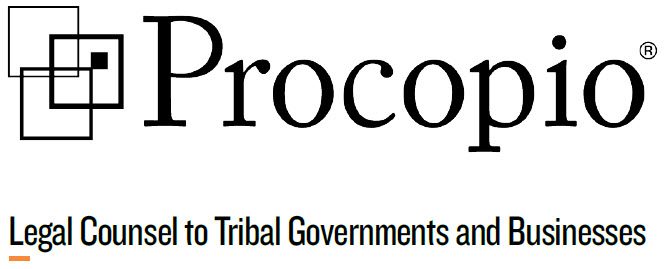By: Theodore J. Griswold | Partner | ted.griswold@procopio.com
Rachel Giubilato | Law Clerk
The publications are abuzz with the prospects of a very new “green business” in Indian Country. The issuance of the Department of Justice’s October 2014 Policy Statement Regarding Marijuana Issues in Indian Country seemingly opened Tribal business development to enter unchartered territory. Marijuana territory. The prospects of substantial new nongaming business opportunities for Tribal governments cannot be overstated—they are huge. However, each Tribal government will need to adjust its legal system to handle this new industry and will need to create a security system to protect their business while balancing these benefits against social and cultural challenges on the Reservation. Those that do so successfully stand to expand their economic scope where competition is limited, and profits can be rewarding. So what has changed?
Over the past several years, disputes have risen between State and Federal governments over which marijuana uses are criminally enforceable on a Reservation under the Federal Controlled Substances Act and which will be tolerated with DOJ prosecutorial discretion. These disputes left Tribal governments in the dark as to which rules govern Tribal lands. However, the 2014 Policy Statement ended that confusion. The Statement clarified that marijuana operations on Tribal lands may be regulated and enforced by Tribal governments without Federal prosecutorial intervention, consistent with the DOJ’s eight delineated enforcement priorities:
- Preventing the distribution of marijuana to minors;
- Preventing revenue from the sale of marijuana from going to criminal enterprises, gangs and cartels;
- Preventing the diversion of marijuana from states where it is legal under state law in some form to other states;
- Preventing state-authorized marijuana activity from being used as a cover or pretext for the trafficking of other illegal drugs or other illegal activity;
- Preventing violent and the use of firearms in the cultivation and distribution of marijuana;
- Preventing drugged driving and the exacerbation of other adverse public health consequences associated with marijuana use;
- Preventing the growing of marijuana on public lands and the attendant public safety and environmental dangers posed by marijuana production on public lands; and
- Preventing marijuana possession or use on Federal property.
The Policy Statement also provides a government-to-government consultation guideline, which allows Tribes to expect prosecutorial collaboration when enforcement priorities have been violated in their jurisdiction. The consultation is designed to ensure a Tribal voice in the prosecutorial process, respecting the Tribe’s sovereign powers. This helps provide certainty to the Tribe’s venture into the industry.
But is marijuana a legalized business? Us lawyers call that a gray area. In 1996 California voters passed Proposition 215, also known as the Compassionate Use Act which technically did not legalize the use or sale of marijuana (that would conflict with the Federal Controlled Substances Act). Instead, the State of California made the conscious decision that it will not prosecute the use and sale of marijuana when a physician has recommended its use. The Compassionate Use Act amended the Health & Safety Code to ensure that seriously ill Californians and their primary caregivers, who possess or cultivate marijuana for the personal medical purposes of the patient upon the recommendation or approval of a physician, are not subject to California criminal prosecution or sanction. As result, a safe, valid market for marijuana products was created.
However, the Compassion Use Act does not protect marijuana plants from seizure or individuals from Federal prosecution under the Federal Controlled Substances Act. The new DOJ Policy Statement changes that concern on Tribal lands and creates a better understanding with that, provided the DOJ’s eight priorities are supported by the Tribal regulatory system, the Tribal government can sanction the cultivation and sale of marijuana on Tribal lands. As a controlled substance, Tribes will want to regulate how the substance is grown and/or disbursed on the Reservation, and will need to provide security to protect their system and their investment. These are protections that the limited number of local medical marijuana dispensaries in California municipalities have already faced.
Moreover, the Compassionate Use Act does not allow for any individual or business in the State of California to profit from the growth, sale or distribution of marijuana (California Health and Safety Code section 11362.765(a)). This restriction requires all medical marijuana facilities in the State to be nonprofit organizations, restricting investment into the businesses from outside entities. This restriction would not apply to businesses on Tribal lands.
Make no doubt about it– this could be a big deal in Indian Country for those governments that choose to pursue the industry’s challenges. And no compact is required to be negotiated with the State. This potentially lucrative business operation can increase a Tribal government’s economic independence to fund currently under-funded governmental programs, expand available educational opportunities through scholarship grants, and create jobs for Tribal members on the Reservation.
The 2014 DOJ Policy Statement can be found here. The Compassion Use Act is found here. Tribal governments seeking additional information on the formation of marijuana operations may reach out to the author.
Ted is head of the Native American Law practice group and primary editor for the Blogging Circle. Connect with Ted at ted.griswold@procopio.com and 619.515.3277.
